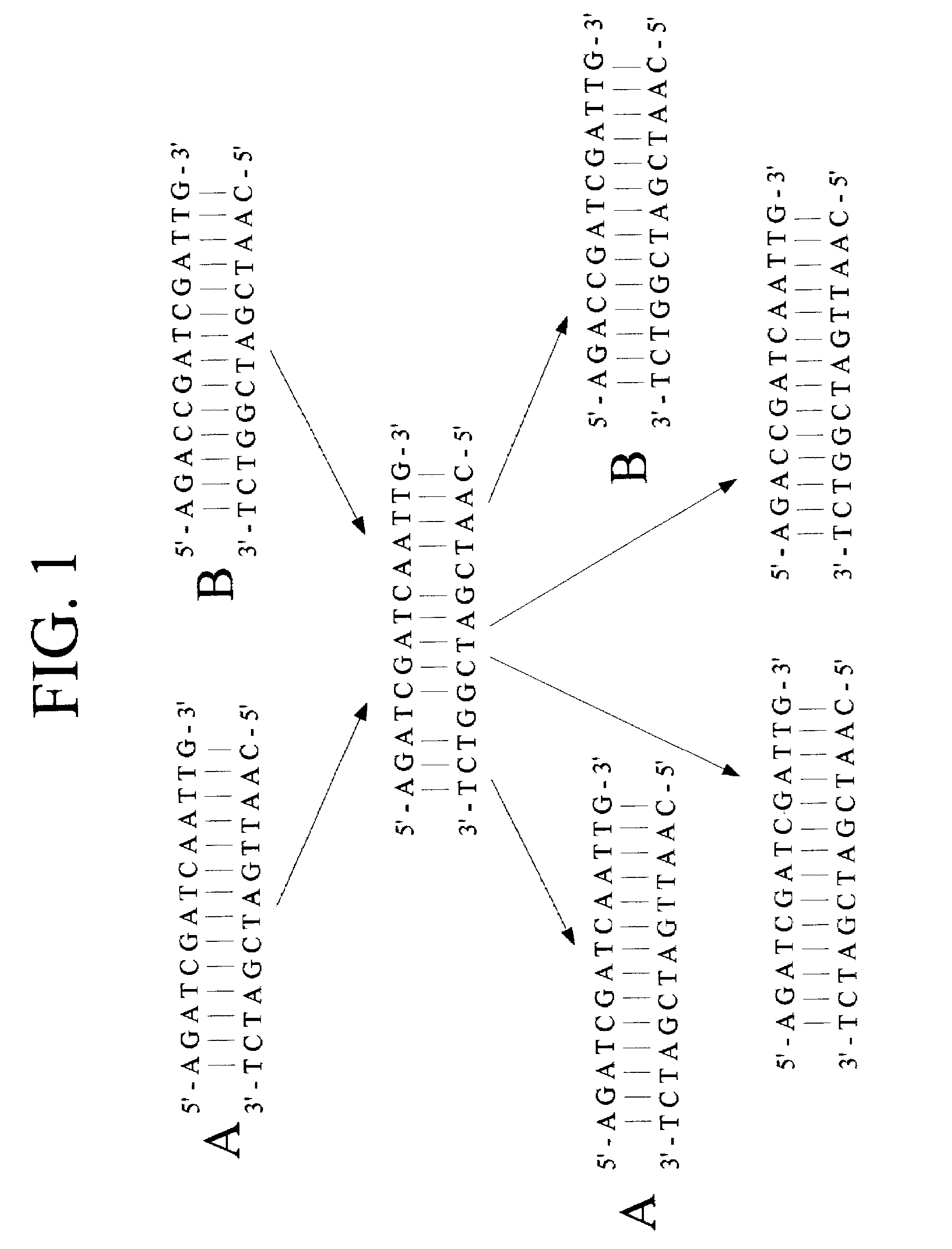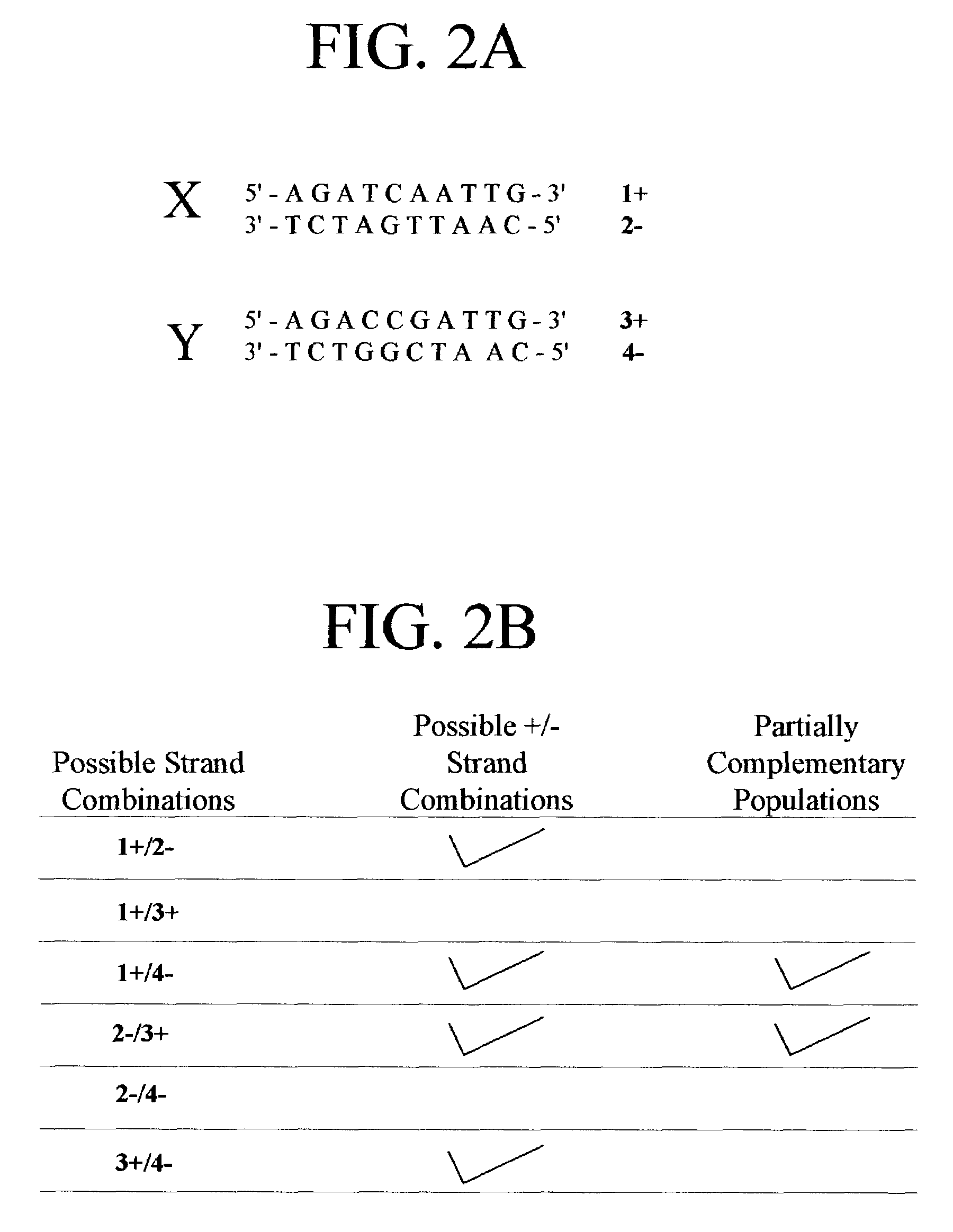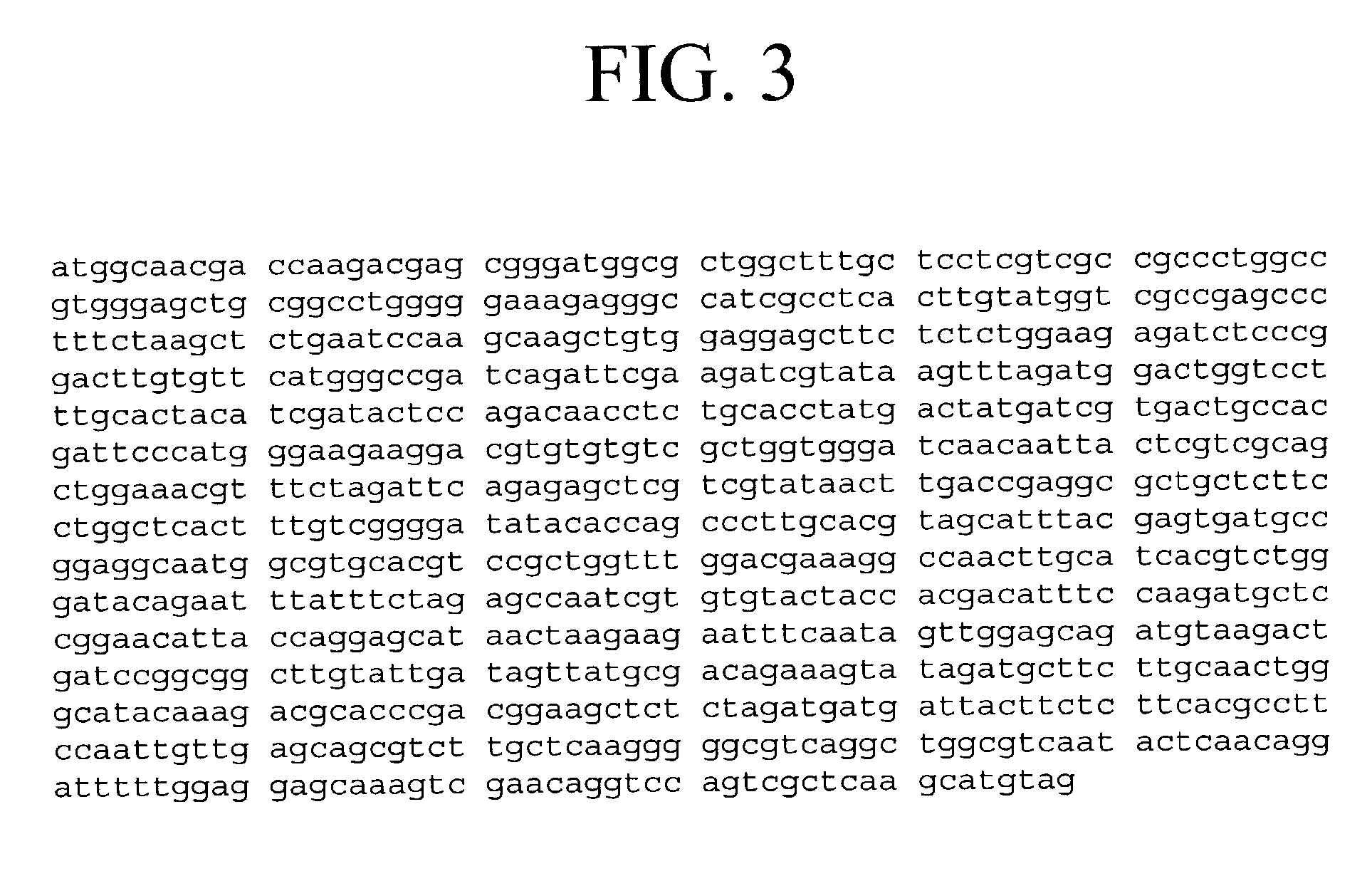Population of polynucleotide sequence variants
a polynucleotide sequence and variant technology, applied in the field of molecular biology, can solve the problems of increasing the ratio of deleterious mutations to beneficial mutations, tedious and laborious processes, and increasing the rate at which sequences incur mutations with undesirable effects
- Summary
- Abstract
- Description
- Claims
- Application Information
AI Technical Summary
Benefits of technology
Problems solved by technology
Method used
Image
Examples
example 1
Cleavage of Mismatched DNA Substrate by CEL I
[0180]This example teaches the preparation of CEL I enzyme and its use in the cleavage of mismatched DNA substrate.
[0181]CEL I enzyme was prepared from celery stalks using the homogenization, ammonium sulfate, and Concanavalin A-Sepharose protocol described by Yang et al. (Biochemistry, 39:3533-3541 (2000), incorporated herein by reference. A 1.5 kg sample of chilled celery stalks was homogenized with a juice extractor. One liter of juice was collected, adjusted to 100 mM Tris-HCL, pH 7.7 with 100 micromolar phenylmethylsulfonyl fluoride (PMSF), and filtered through two layers of miracloth. Solid (NH4)2SO4 was slowly added to 25% saturation while stirring on ice. After 30 minutes, the suspension was centrifuged at 27,000g for 1.5 hours at 4° C. The supernatants were collected and adjusted with solid (NH4)2SO4 to 80% saturation while stirring on ice followed by centrifugation at 27,000 g for 2 hours. The pellets were re-suspended in buffer...
example 2
Conservation of Full Length GFP Gene with Mismatch Resolution Cocktails
[0186]This example teaches various mismatch resolution cocktails that conserve the full length GFP Gene.
[0187]Mismatched GFP substrate was treated with various concentrations of CEL I in the presence of cocktails of enzymes that together constitute a synthetic mismatch resolution system. The enzymes used were CEL I, T4 DNA polymerase, Taq DNA polymerase and T4 DNA ligase. CEL I activity should nick the heteroduplex 3′ of mismatched bases. T4 DNA polymerase contains 3′-5′ proofreading activity for excision of the mismatched base from the nicked heteroduplex. T4 DNA polymerase and Taq DNA polymerase contain DNA polymerase capable of filling the gap. T4 DNA ligase seals the nick in the repaired molecule. Taq DNA polymerase also has 5′ flap-ase activity.
[0188]Matrix experiments were performed to identify the reaction conditions that would serve to resolve mismatches in the GFP heteroduplex substrate. In one experimen...
example 3
Restoration of Restriction Sitesto GFP Heteroduplex DNA after DNA Mismatch Resolution (GRAMMR)
[0193]This experiment teaches the operability of genetic reassortment by DNA mismatch resolution (GRAMMR) by demonstrating the restoration of restriction sites.
[0194]The full-length products of a twenty-fold scale-up of the GRAMMR reaction, performed at 37° C. for one hour, using the optimal conditions found above (the 1× reaction contained sixty nanograms of heteroduplex DNA, one microliter of CEL I fraction five (described in Example 1), one unit T4 DNA polymerase in the presence of 2.5 units of Taq DNA polymerase and 0.2 units of T4 DNA ligase in 1× NEB T4 DNA ligase buffer containing 0.5 mM of each DNTP in a reaction volume of 10 microliters) were gel-isolated and subjected to restriction analysis by endonucleases whose recognition sites overlap with mismatches in the GFP heteroduplex, thereby rendering those sites in the DNA resistant to restriction enzyme cleavage. The enzymes used we...
PUM
 Login to View More
Login to View More Abstract
Description
Claims
Application Information
 Login to View More
Login to View More - R&D
- Intellectual Property
- Life Sciences
- Materials
- Tech Scout
- Unparalleled Data Quality
- Higher Quality Content
- 60% Fewer Hallucinations
Browse by: Latest US Patents, China's latest patents, Technical Efficacy Thesaurus, Application Domain, Technology Topic, Popular Technical Reports.
© 2025 PatSnap. All rights reserved.Legal|Privacy policy|Modern Slavery Act Transparency Statement|Sitemap|About US| Contact US: help@patsnap.com



